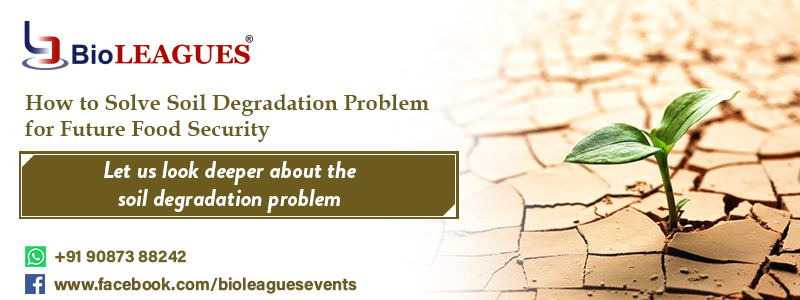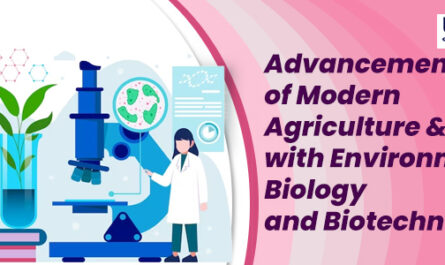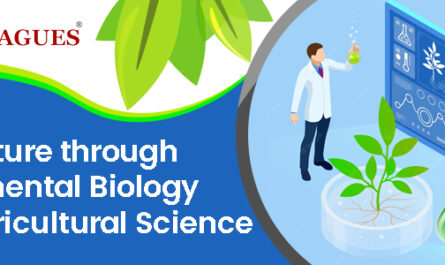Fixing soil degradation issues with effective solutions in Food conference
Soil is valuable; it is an essential non-renewable resource that supports thousands of animals, plants, and other necessary life forms. It sustains numerous ecosystems and provides us with fundamental food and resources. The dirt underneath our feet is often overlooked, but it is important for the survival of all life on Earth.
Soil contains a large number of living organisms that communicate with one another. These organisms have a significant impact on soil formation, composition, and productivity. But soil degradation is a major issue for our future generation, but according to top fungi plants division researchers, a notable food conference is the only solution for this issue.
Let us look deeper about the soil degradation problem…
What is soil degradation and how an upcoming conference solves it?

Soil degradation is what occurs when the quality of soil deteriorates, reducing its ability to support earthy species. Soil can lose physical, compound, or biological properties that support the web of life within it.
Soil degradation includes soil erosion. It occurs when topsoil and essential minerals are lost naturally, such as through wind erosion, or as a result of human actions, such as poor land management. So, at an upcoming conference of food and health, a research committee will be formed to analyze the effects of soil degradation with clean statistics to implement creative solutions to provide to the people at a conference event in which they will participate.
What does healthy soil resemble?
There are various types of soil all over the world. There are over 700 different types of soil on our earth, including clay, sand, silt, loam, and peat. The soil has various properties that can be beneficial to humans. For its type, healthy soil has a nice mixture of soil structure, chemistry, and organic matter content.
A typical healthy soil will be teeming with biodiversity, including a diverse array of earthworms, 20-30 different types of small arachnids, 50-100 different insect species, dozens and dozens of different fungi, and thousands of different species of bacteria.
‘Something’s in soils will be easily visible to the naked eye, such as invertebrates and plant roots,’ researchers explained. ‘However, there are literally billions of things that people will not be able to see, such as microorganisms and all the interesting work they do together.’
- Nature is so closely populated nowhere else on the planet. More organisms can be found in a teaspoon of soil than there are humans on the planet.
- Brown earth is one of the most common soils on our planet, which accounts for about 45 percent of land.
- Brown earth has a thick top layer that contains the majority of the nutrient content and it is the site of biological processes. It gives a plethora of space and guidance for roots to grow comfortably at around 20 centimetres deep.
- Brown earth also consumes water slowly, allowing plants to absorb sufficient water without drying out or flooding.
These characteristics make brown earth ideal for agricultural production, and most farms rely on it. An excellent international conference on food and health will not only describe soil degradation, and also highlight the significance of healthy soil.
Major impacts of soil degradation and how a food conference offers a beneficial solution

An increase in population raises the amount of food needed to survive. Changes in soil health and function have severe effects on ecosystems all over the world, including lower ecosystem capacity to supply goods and services to their recipients, landslides and floods, increased pollution, desertification, and decreased food production globally. The loss of soil productivity brought on by land degradation is one of the major challenges to our future food security.
- Nearly one-third of the world’s agricultural land has vanished in the past forty years, according to a recent UN report.
- Due to intense farming activities such deforestation, overgrazing, erosion, excessive exposure to pollutants, land-use change, intensive agriculture, forest fires, building work, and many others, soil quality has deteriorated over the past few decades.
- Quick water runoff, soil deterioration makes it possible to limit water runoff, water storage capacity, and the variety of plants, animals, and bacteria.
- Environmental change and anthropogenic effects are major threats to soil fertility survival.
The Food Conference offers perplexing solutions to the serious consequences of soil degradation. It plays an important role in creating channels and routes to solve problems and reveal secrets to maintaining healthy soil, as well as providing knowledge on physical stability for plants and trees by helping the roots to make as useful for future. It also contributes with a solution to the production of oxygen and clean water for all life on Earth.
Conclusion:
Some leading scientists are attempting to discover new, natural methods of managing soil in order to improve its function. Changing our soil to make it more suitable for habitat is something we can all do to help make a difference, and this is exactly what the Bioleagues Food Conference is doing for us.
Conference Alert 2024 is a similar destination to learn about food conferences around the world; it also provides more information about events and exhibitions of sustainable environmental practices. The earth’s soil has provided us with resources, and it is time for us to give it back by combating to protect it.




